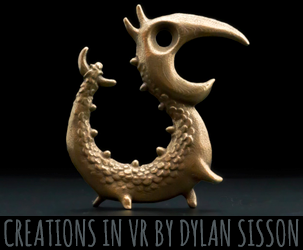


Wolfwalkers – Odyssey of the Senses
By Maria Elena Gutierrez
In Wolfwalkers, a young English girl called Robyn Goodfellowe escapes Kilkenny, the Irish town to which she has been brought by her father, in order to explore the wonders of the surrounding forest. In doing so, she turns her back on the world of human beings and opens herself to the world of wolves.
At this fundamental level, Wolfwalkers can be seen as a story of the conflict between civilization and
In contrast, the world of the forest is an enchanted paradise. It looks like a three-dimensional watercolor painting – it’s fluid and loose, filled with energy and life. When we see the wolves running through the trees, they move like liquid. All of this tells us that nature is the space of creativity, the space of liberation. Indeed, Mebh
While the design of the town draws on woodcut illustrations from the period, the forest owes a clear debt to the highly decorative manuscripts
Having passed from the hard, geometric world of the town into the fluid space of the forest, Robyn meets Mebh, a girl about her age who is the embodiment of the natural world. This contrast between town and countryside is echoed in the design of these two protagonists. Look at Mebh, and you will see that the shape of her hair resembles a leaf; her face is round like a heart. But Robyn, who desperately wants to be a hunter, has a face shaped like an arrow; in certain sequences her cape takes the shape of an arrow, too.
The world of nature has yet another aspect, because it is also a space of magic and ritual. We first see evidence of this in the inscriptions on the walls of the cave where Mebh resides with her mother and the wolves. These markings immediately transport us back to a time when human beings first felt the need to represent sacred beings through drawing. In this way the cave represents our relationship to the divine world and reminds us that, in order to forge the future, we must first explore the past.
Venturing deeper into the cave, we discover Mebh’s mother represented in a way that evokes ideas of a Mother Earth Goddess. This returns us to the sacred moment when humans and animals lived in symbiosis, and again we see this story recounted on the walls of the cave. As we absorb the ancient narrative, we realise we are in the presence of the divine.
Even the shape of the cave is suggestive and full of meaning, resembling as it does female anatomy. In this and many other ways, the movie is a celebration of woman.
For example, Robyn is an archetype of the woman standing against the oppressive authority of men, just like Antigone, stood against her uncle Creon in order to honor paganism and the oral laws of the gods. There are clear echoes of Antigone’s story in Wolfwalkers, where the townspeople are told repeatedly that terrible things will to happen if they cut down the trees. At one point, the woodcutter explains to Robyn’s father that Saint Patrick made a pact with the pagan god. As for the Wolfwalkers themselves– they are the magical gods, the divinities who have existed in the forest since primordial times, since before history began.
Wolfwalkers is also a celebration of the senses. When Robyn passes from the hard, geometric world of the town into the fluid space of the forest – and in particular when she transforms into a wolf – Mebh tells her not to rely on her eyes. Instead, Robyn must learn to use her other senses – her sense of smell, or the feel of the earth beneath her paws. Mebh is there to guide her – and also us, the audience – into this sensory world.
In addition, beyond even the power of the senses, Mebh possesses the
Dr. Maria Elena Gutierrez is the CEO and executive director of VIEW Conference, Italy’s premiere annual digital media conference. VIEW Conference is committed to bringing a diversity of voices to the forefront in animation, visual effects and games. For more information about the VIEW 2021 program of events, visit the official website: http://































